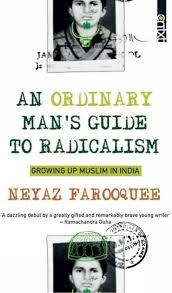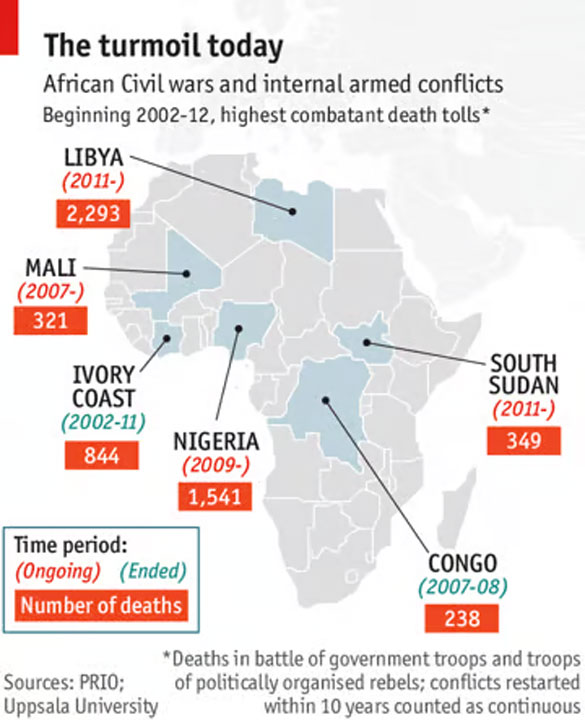In a nation where religions are prone to competing for politics and identity, there was one who quietly transcended all religious barriers with his pen, heart, and imagination. He was neither a political activist nor a secular intellectual. He was a devoutly religious Islamic scholar — a Maulana — who was fond of Lord Krishna too. This is the tale of Maulana Hasrat Mohani, a great Urdu poet, freedom fighter, and Islamic philosopher, who wrote beautiful poems in praise of the Hindu god Krishna, referring to him as "Murliwala" (the flute-player) with such ardor that many were left agog.
This essay considers the significant legacy of Hasrat Mohani. It explores his remarkable synthesis of bhakti and Sufi piety, his Krishna bhakti, and the way his writing still speaks to us today in periods of communal strife. We also explore the way this hybrid writing can be an effective instrument of interfaith dialogue and national cohesion.
Who was Hasrat Mohani?
Hasrat Mohani was born in 1875 in Mohan, near Unnao in Uttar Pradesh, to a renowned Muslim family. He was a renowned Urdu poet, a political activist in the struggle to free India, and an Islamic scholar who never abandoned his faith. He was also a prominent figure in the All-India Muslim League and the Indian National Congress and is credited with having designed the slogan "Inquilab Zindabad" (Long live the revolution).
Hasrat was not like ordinary politicians or religious figures. He was a spiritual journeyman, a person who sought meaning rather than an ordinary politician or religious figure. He regarded the Hindu god Krishna rather as a symbol of love than as a competitor. He used to go to Mathura and Vrindavan, which are closely associated with the life of Krishna, and he would observe a fast during Janmashtami. His poems contained tender words — employing Sufi imagery, words of love, and concepts of Islamic mysticism to express his longing to unite with the divine.
Krishna in the Heart of a Muslim Poet
What was unique about Hasrat's devotion to Krishna was not that he was fond of Hindu culture — many secular intellectuals were — but that he had absorbed Krishna. In many of his ghazals, he called himself a gopi (a milkmaid), in the expectation of a glimpse of his beloved Murliwala. This was not symbolic love; it was personal, poetic, spiritual love.
One of his own famous couplets is:
"Kya Tamannaa Hai, Kya Justaju Hai,
Yaad Aati Hai Unki Madhur Murli."
(What a desire, what a longing I have,
I remember the sweet sound of his flute.)
This kind of verse, when a Muslim Maulana describes Krishna's murli (flute) in words of love, disrupts the Hindu-Muslim dichotomy. It wipes away the line of "us" and "them" and instead reminds us of "we" — one people, one culture, one common spiritual longing.
The Indian Tradition of Syncretism
Hasrat Mohani did not start the idea of syncretism. Shared spirituality is a long tradition in India, especially through Sufism and Bhakti movements. Kabir, who criticized both Hindu and Muslim traditions, and Amir Khusro, who wrote poetry on both Allah and Hindu gods, have inspired many people over the centuries.
Shirdi Sai Baba was both revered by Hindus and Muslims in the South. In Bengal, Lalon Fakir wrote songs that cut across religions and created bonds through his poetry and songs.
Hasrat Mohani's love for Krishna is part of a wider Indian tradition, one where devotion to the divine, not the religion you're from, comes first. What's special about his work is that he did it all while remaining a practicing Muslim, dressed in the classic Maulana sherwani and topi, and citing the Quran and Hadith — and yet singing hymns to Krishna with tears running down his face.
Why Did He Adore Krishna?
Hasrat respected Krishna due to a rich tradition of Islamic mysticism in India. The Sufi concept of Ishq-E-Haqiqi (divine love) has parallels in the Bhakti concept of prem-bhakti. In the former, the human spirit yearns for the beloved — Allah, Krishna, or simply "the Friend." The Sufi and Bhakti concepts of love are both universal and intimate.
Krishna, with his playful disposition, charming personality, and deeper connection with Radha and the gopis, represented the beloved for Hasrat Mohani. He did not envision a religious adversary in Krishna but a personification of the divine beloved he yearned for.
His passion was not idolatry; it was yearning, passion, and transcendence. Krishna was not a political or religious leader to him, but a symbol of love — one that transcended mosques and temples.
The Political and Cultural Courage
In a period when identity politics has further undermined the Hindu-Muslim divide, Hasrat Mohani's affection for Krishna is not just such a brave act but also an emotionally robust one. It was a gesture of courage, and not poetry. Remember, this was a man who was imprisoned by the British, did not sign the Quit India resolution for its lack of specificity on Hindu-Muslim unity, and yet never lost faith in a mixed culture (Ganga-Jamuni Tehzeeb).
He was a devout Muslim. He prayed five times a day, fasted when it was Ramadan, and still loved a god in another religion. His life teaches us that love and faith are not two opposing entities — you can love your own faith intensely and still appreciate the beauty of another.
Modern Significance: Lessons for Today
In today's India, religious tensions are increasing. Temple and mosque, love jihad, hijab, beef are issues that have divided communities. Hate speeches, riots, and tales of communities dominate TV channels and social media. Amid this, Hasrat Mohani's tale is a welcome respite.
It teaches us that we can love one another despite the differences, have common belief in a higher power, and embrace other faiths rather than fearing them. Hasrat's Krishna poems can be taught in school, practiced in interfaith gatherings, and translated into plays and films to bring people together.
It's not about tolerating each other; it's about loving each other. It's not only cohabiting in harmony, but happily revelling in each other's gods and cultures.
The Syncretic Literature Contribution to Interfaith Dialogue
Literature which combines religious concepts, such as that of Hasrat Mohani's poetry, has a tremendous role in unifying religions. Here's why:
1. Common Feeling Words
Poetry speaks to the heart. If a Muslim Maulana writes about Krishna out of love, it crosses boundaries. It transcends logic and addresses the heart. People feel connected to one another when they realize that their sentiments are the same.
2. Humanizes the 'Other'
In religious conflicts, the "other" is demonized. But when a Muslim poet calls Krishna "Murliwala," he is now a part of the same spiritual clan. Literature humanizes, softens, and reunites.
3. Maintains Composite Heritage
India has a rich cultural heritage of songs, festivals, and rituals enjoyed by the populace. If literature keeps such culture intact, it keeps it alive. Hasrat's Krishna poems are evidence of a culture that had once revered both Ram and Rahim.
4. Presents Other Stories
In times of communalism, powerful narratives divide people. Syncretic literature provides alternative stories — of respect, harmony, and love. They are vital in popular culture, the mass media, and schools.
Examples Of Blended Influences.
Hasrat Mohani was not solitary in exercising influence. Poets like Rahim (Abdul Rahim Khan-i-Khana), who served in the court of Akbar, wrote poems praising Lord Rama and Krishna. He declared:
"Rahiman, do not disrupt the thread of love."
"Don't let it break, or it will get knotted."
Do not abruptly break the bond of love,
Once it is snapped, it cannot be tied up in a knot.
Today, some of the prominent Bollywood lyricists such as Shakeel Badayuni, Kaifi Azmi, and Gulzar have written bhajans, kirtans, and devotional songs for different religions. Muslim Sufi Nusrat Fateh Ali Khan sang hymns in the name of Shiva and Krishna.
Hasrat's legacy is continued through these arts, affirming that politics can injure but literature and music can heal.
Restoring the Hasrat Spirit to Contemporary India
How do we carry on Hasrat Mohani's legacy today? Here are some suggestions:
Educational Curricula: Include his poems in school curriculum. Not only as Urdu literature, but also as moral education and interfaith studies.
Public Readings and Festivals: Organize "Krishna Mushairas" where poets from every religion come and celebrate Krishna, love, and togetherness.
Translations and Performances: They can be translated into Hindi, Malayalam, Tamil, English, and other Indian languages. They can be performed on stage to reach the youth.
Digital Campaigns: Share his couplets on social media, create videos, and discuss interfaith love in books.
Scholarship and Research: Encourage universities to research and share research on his poems, particularly the Krishna poems, to keep the topic in the limelight.
Conclusion: Maulana as a Messenger of Love
In a fractured world today, we require more Hasrat Mohanis. Not poets, but individuals who are able to hold a religion in one hand and offer a second hand in friendship. Both his work and life demonstrate to us that love — divine or human — conquers hate. Krishna and Allah are not adversaries in a war of names, but two names that the heart can utilize to reach the same horizon. When a Maulana from Mohan composes songs about missing Murliwala, he teaches us what true spirituality is all about — courageous, honest, kind, and full of awe. His legacy is not just about writing, but also about emotion and principles. In Hasrat Mohani's voice, Krishna's flute continues to ring out. We need only pause, listen, and perhaps — fall in love all over again.




